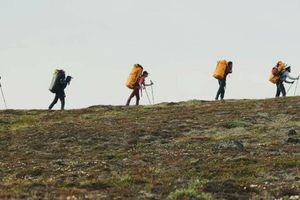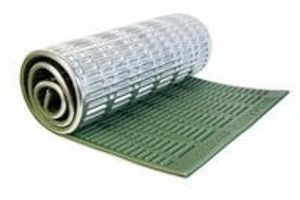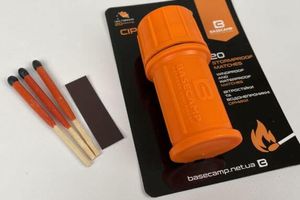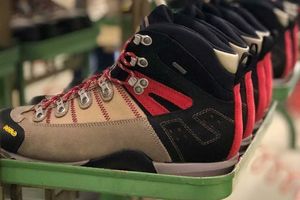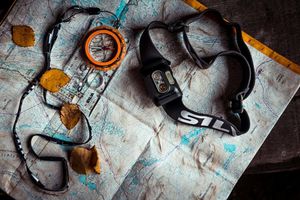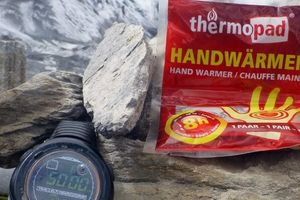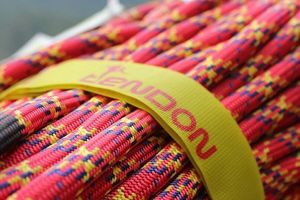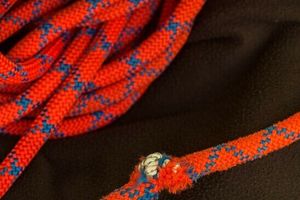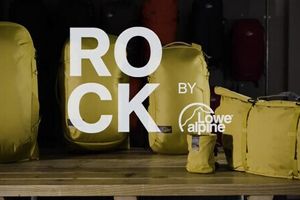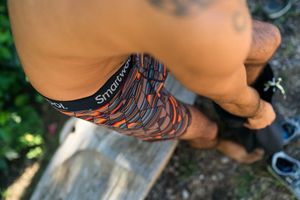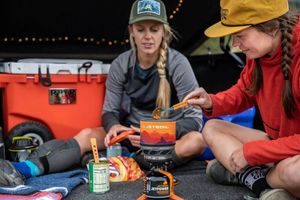For people who don’t know anything about slacklining, it associates with funambulists – same balancing, same movements above ground. But it’s not that simple. Funambulists walk on harsh almost immovable rope and they have bar for balancing. Slackliners move on saggy rope, it “plays” under their weight, swings from side to side. They keep balance only using their core. No bars or other helpful equipment, only rope, their body and gravity.
Entry: what is slacklining?
Slacklining as separate discipline is that slackliner walks/jumps/performs complex tricks/does yoga on a rope stretched above the ground. Slack may be stretched super hard and be almost immovable or sag under person’s weight.
Depending on tension, changes difficulty of moves, balance maintenance. On hard stretched rope you can walk, do easy tricks and even do asanas from yoga, but if the rope is saggy, it actively “plays” under your weight and moves from side to side. Keeping static balance becomes harder. Such format of slacklining suits for those who already knows basic skills, for professional slackliners and extreme lovers. They do difficult tricks, jump, run on slack. Most of these need to be done with safety rope and on a big height. But about that later.
History of slackline
Today people distinguish a lot of styles and types of rope walking, but it all started in the distant 60-s.
On peak of popularity of rock climbing Californian “Valley”, also know as National Part Yosemite was full with rockclimbers of different skills. Advanced lovers of solo climbing, sportsmen, amatours and begginers could have been found there. It was Mekka for rock climbing. People from all over the country went there to check themselves on natural relief.
And here slacklining was born.
Killing time during bad weather or in between sets, guys were walking on metal cords, that fence off the parking on bus stops, just for fun. Some kind of format of training balance and coordination. Slackchain on which they were walking was a predecessor of modern slack. But chain was stable and static which was boring.
Next step was old climbing ropes. For full climbing old equipment was not suitable as it was dangerous to use. But for slackwire it was okay. Guys stretched them and were going everywhere they could:
-
On rocks in between sets to support coordination and for fun;
-
On parkings while waiting for transport;
-
In parks just for fun.
Walking on rope comparing to rope was much more interesting, it was “playing”, swinging from side to side, it could have been stretched harder or make it saggy. But small diameter of the rope was uncomfortable for feet, it was hurting. And during failure it could hurt skin.
But already in 1980-s sling appeared to help. Adam Grossowsky and Jeff Ellington used sling 5 sm in width for slacklining. In one version these guys are founders of slackwalking.
In other version Scott Balcom, Darrin Carter and Chongo decided to change boring chain to nylon sling in 1978. It significantly added excitement and extrme to the new passion. Guys not only trained alone but also popularizes slacklining among such crazy extreme lovers like themselves.
But noone will argue that “the Valley” is a homeland to slacklining and all of its schools. First basic slacks were here, first use of double sling was here, world’s slacklining legends made their first steps on height here.
Styles of sling walking now and then
Then in 1980-s first schools of slacklining are born under the leadership of these guys.
For example Scott Belcom was promoting his “Scott’s school”. He was a fan of narrow slack that was not super stretched. To walk on such a sling, it is important to have a fine sense of balance, because the slack is constantly swinging from side to side. The movement along such sling resembles a half-pipe, like on a skate - softly, smoothly, playing with your feet from side to side. Super Tape - the type of sling used at the Belcom school is only 1 cm wide, it is very elastic, has a lot of sag, and the length is up to 10 m on average. By the way, Scott is one of the first people to climb the high slack on Lost Arrow Peak, it happened on July 13, 1985, and his gait is recognized as the softest among the rest of the athletes.
Under the incluence of Darrin Carter appeared “Darrin’s school”. Boys were practicing walking on long, high slack-lines. Of course they also trained in “The Valley”. Darrin is the second who walked on high-line abole Los Arrow Peak, this happened in 1998. Today Darrin is considered to be the greatest slackliner in the world.
The beginning of the 2000s was marked by the appearance of the first slackline manufacturing companies. Before that, the boys were making tracks on their own. Gibbon, Spider Slackline became pioneers in slack production. Professional equipment expanded the horizons of using slings for walking, now everyone could do it.
Today, in addition to classic slack walking, the following styles can be clearly distinguished:
-
Lowline is the "lowest" option. The height above the ground is up to 1 m, a rigid sling 15-25 m long is used. The width can be different, but most often it is a wide slack with a width of 5 cm. It is great as a base, lowlines are used by beginners, those who take their first steps on a sling. The Gibbon The Slamina Webbing sling is suitable for both beginners and those looking for static on the slack.
-
Highline – sling at height. The length of the sling can be from 15 m. It is fixed on the peaks of mountains and rocks. Be sure to use safety rope, as this is one of the most dangerous walking styles.
-
Longline is distinguished by a maximum length of more than 40 m. They are pulled at different heights depending on the terrain. Low longlines are used for beginners. But it is worth considering that a long sling sags more and swings more, so additional insurance is often used.
-
Waterline – a sling stretched above the water. It can be of different lengths and widths. Most often, this is a longline fixed on opposite banks of a river or lake. Does not require safety rope. This is an excellent option for active recreation in the warm period of the year and entertainment for a large company.
-
Rodeoline. The point is that the slack is not stretched strongly, it sags, sometimes the sag reaches several meters relative to the fixing point. Walking on a sagging trail resembles surfing on waves, where you need to "catch" your balance. Safety rope is a must.
-
Trickline gives you the opportunity to perform tricks, polish your coordination. The sling is tightly stretched, slightly springy. Depending on the complexity, there may be a different height for installation - from 50 cm to several tens of meters. Gibbon Andy Lewis Trickline X13 Webbing is perfect for a trickline, it is reinforced with a polyurethane coating and can withstand a load of up to 30 kN.
Each of these types of walking is interesting and unique in its own way, but one way or another they will be intertwined. For example, if you pull the lowline as hard as possible, you can go from simple walking to tricks on the trackline, and the highline easily turns into a waterline if it is fixed above the water.
World records in the field of slackline
Slacklining is a field where records will be not only unique, but also spectacular. Elegant passage of the track at a height of several hundred meters, acrobatic tricks, extreme jumps - all this is fascinating and you want to watch it again and again.
Here is a short list of world achievements in slacklining that are listed in the Guinness Book of Records:
The highest highline is at an altitude of 5,700 m in the Kilimanjaro mountains. The record belongs to Stephan Siegrist (2016).
The longest longline is 2,240 m. Nathan Paulin completed the highline at a height of 100 m. The record was set in May 2022.
The longest collective run is 2,700 m. Nine athletes ran the slack stretched between Puy de L'Agnel and Roque de Cuzo, France, in August 2022.
The longest waterline is 222 m. Michael Kemeter walked over the water along the trail on 06/06/2012 in Austria.
Slackline today: how to choose who walks and who benefits from it
But slacklining is not only a sport for the elite. Both adults and children can walk on the rope. It can be found more and more often in gyms, at rock-climbing festivals, and in parks. You don't have to be extreme to discover the world of balance and equilibrium. This is an excellent training of the deep muscles of the legs, keeping the body in good shape and just having fun.
If you set out to buy slackline, first decide on several factors:
· Where will you walk? The ability to stretch a certain length of the sling depends on this. For some, a park or backyard will suffice, while for others, space or a special Gibbon Slackframe-type mount will be needed. There are tracks with a length of 15 m and longer.
· Do you want a soft or hard sling? Rigid is usually used by beginners, those who are important to the static of the trail. It is made of hard polyester, which practically does not stretch. Suitable for walking, light tricks, yoga. The soft sling "plays" under the weight, stretches and springs well. Used for complex tricks, jumps, "surfing" on a rope. It is made of nylon or a mixture of nylon and polyester.
· What will the width be? There are slack lines with widths from 25 mm to 5 cm. The wider, the more comfortable it is to stand and walk. Narrow, on the contrary, complicates the task. Wider options are used for yoga, jumping, tricks, and a narrow one is suitable for rodeoline.
Pay attention! Models for static loads (yoga, light exercises) are additionally covered with a layer of silicone or rubber to increase their grip.
When choosing a sling for walking, do not focus on your current level. Perhaps in a month you will confidently walk backwards, "surf" or even jump. Therefore, we advise you to buy a universal or more advanced slackline relative to your level.
Reading this article, you may have thought "this is all very interesting, but it’s not for me". So, everyone can walk on the trail, there are no special contraindications to refuse such entertainment.
Slackline will be useful to those who:
· Wants to improve their physique. Slacklining is not like grueling gym workouts, running, or even rock climbing. It does not require special skills (at the initial level) and loads the muscles well. In an easy, almost playful form, you train deep muscles, abdominal muscles, your legs work, hip, knee and ankle joints are well worked out.
· Needs rehabilitation after injury. Rehabilitators and traumatologists of leading clinics recommend slackline as one of the options for additional loads during recovery after injuries of the musculoskeletal system.
· Wants to improve posture. Walking requires correct body position and balance. By training your coordination, you strengthen the muscles of the body and legs, align the position of the back.
· Wants to improve brain function. If it does not sound illogical, but walking on a trail requires the formation of new neural connections. Atypical load, coordination of movements contribute to increased brain activity. At the same time, you do not read and do not work mentally, but simply have fun.
· Systematically engages in other sports. It is useful to combine constant loads of the same type with something new. In addition, slackline will be useful for rock climbers, skiers, and snowboarders. The feeling of balance, which is developed during the process of standing and passing the trail, is positively reflected on the muscles.
· Loves outdoor recreation. Slackline is primarily entertainment. And if you are not a fan of doing nothing in nature, then a sling is what you need
Conclusion
Slackline began its history as one of the options to have fun in nature, and today it is a whole industry with its own schools and styles of walking. There is even a World Slacklining Association that holds competitions and popularizes this sport format.
Manufacturers offer slacks for both beginners and advanced slackliners. At the same time, both the first and the second are extremely reliable, strong and able to withstand heavy loads.
Walking on a tightrope is a pastime that exercises your body, your brain and your spirit.
List of stores partners in Ukraine where slackline Gibbon can be bought.


